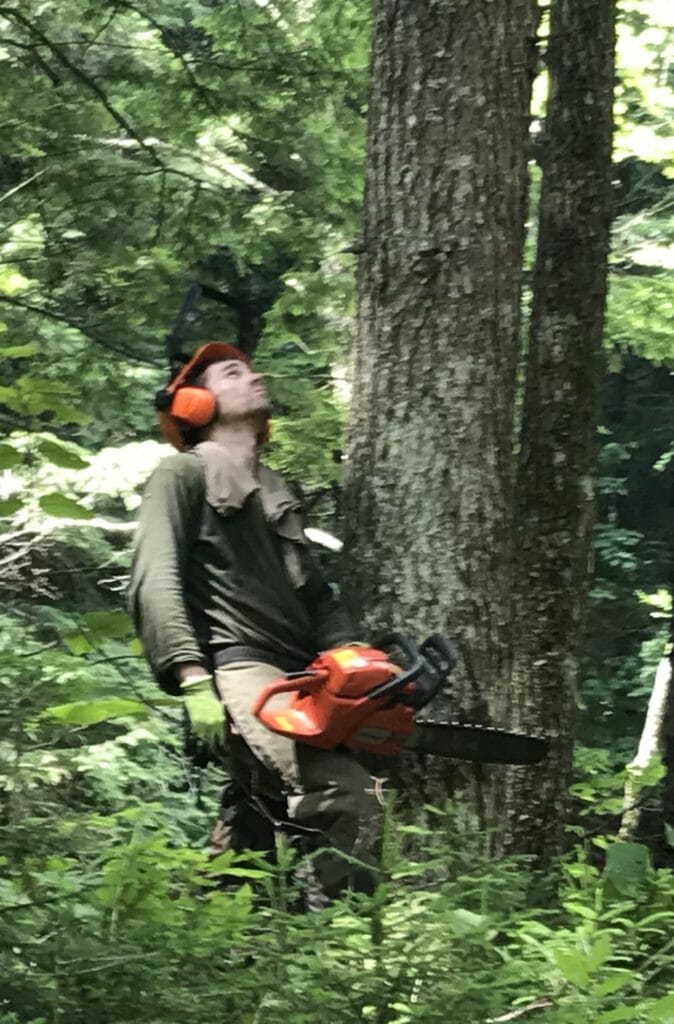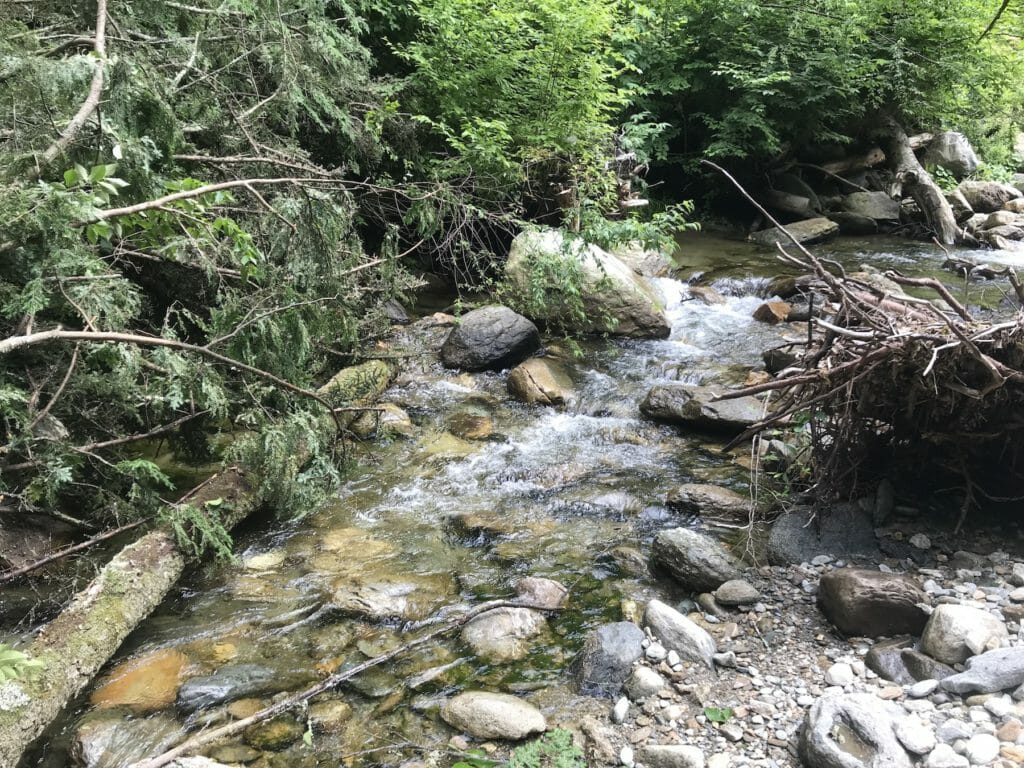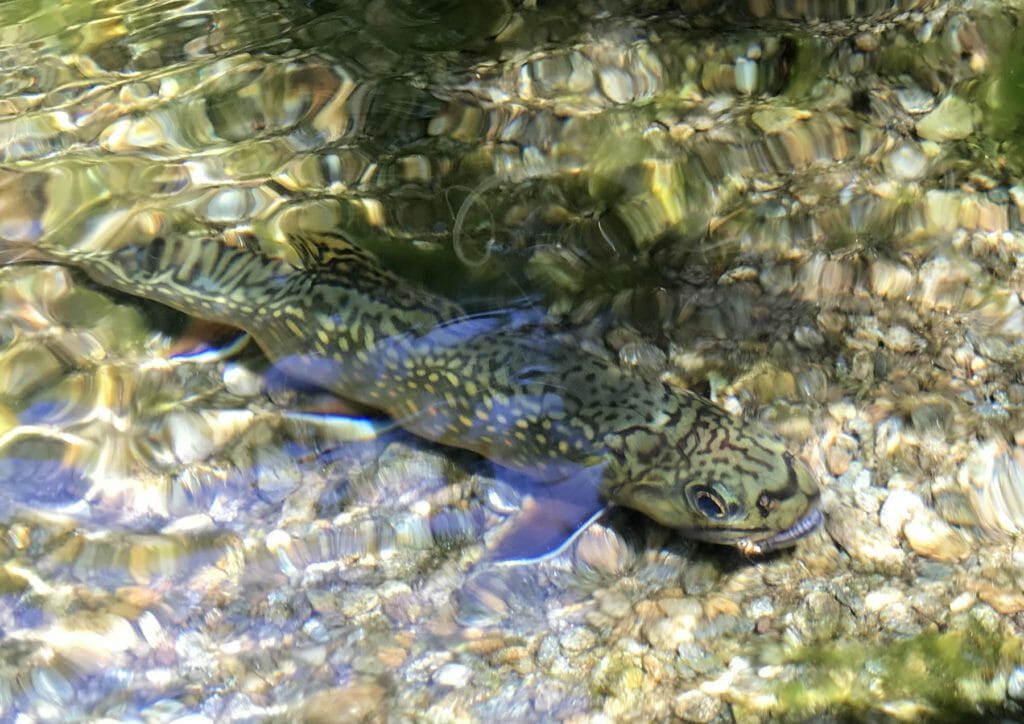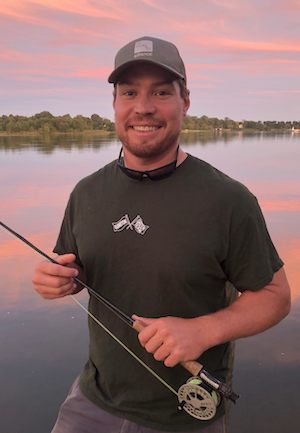By Zack Hoisington
On July 14, 2019, I found myself in uncharted territory, driving north through upstate New York on highway 87 into Adirondack State Park.
As the sun started to lower, I noticed a sign for Montreal. Although I have spent very little time in this part of the country, something told me I was going the wrong direction. I had missed my eastbound turn about 20 miles back in Lake George and had to backtrack.
My destination was an unincorporated community in the Green Mountains of Vermont called Goshen. Six people whom I had never formally met awaited my arrival in a secluded Airbnb farmhouse with no cell service.
Around 10 p.m. I finally pulled into the dark driveway, stepped out of my truck and embraced the quiet night and 60-degree air, two things that the previous weeks of commuting from Annapolis, Md., to Washington DC had made me forget all about.
My summer internship with Trout Unlimited was in full swing, and my assignment was to document woodloading restoration work on a stream called Chittenden Brook in the Green Mountain National Forest.
I casually walked into the house and introduced myself to the strangers. They were starting to wind down and get ready to rest up for the following day, which would be the first of four consecutive 10-hour workdays.
Trout Unlimited’s “field season” was in full swing.
“It’s hard work,” one of the crew members said, “But I’d rather do this than be a desk jockey all summer.”
It wasn’t difficult for me to infer the meaning of “desk jockey” and I couldn’t help but think these guys had me coined as one.
The next morning, I got up early to head 15 minutes down the road to the town of Brandon to get lunch for the day. I would have to meet the crew on site at Chittenden Brook.

Joel DeStasio, the project field manager briefed me on where to meet. Using a map, he pointed out a small road in Green Mountain National Forest called Chittenden Brook Road. “You’re going to cross a bridge, go up a small hill and you will see our cars off to the side of the road,” he said.
There is no cell service throughout the National Forest, so the common routines of exchanging phone numbers or dropping a “pin” were out of the question.
I noticed how relatively straight Chittenden Brook looked on the map. The straight course reflects its rapid descent down a steep gradient of bedrock. It is a true headwater stream that drains some of the highest peaks in the region. Deposits of debris high up on the streambank are remaining evidence of the powerful floods and ice flows that affect the stream annually.
Following Joel’s instructions, I found the restoration site with little trouble. My hard hat and reflector vest hung on his rear-view mirror. I grabbed my bag of lunch and camera equipment, put on my steel toed boots, donned the safety equipment that Joel had left for me and walked carefully upstream toward the sound of chainsaws.
As Joel consistently preaches, woodloading work is “extremely dangerous.”
The crew consists of two certified sawyers and four field hands. The crew members strategically select trees to fell into the streambed based on several criteria. The goal is to safely place wood into effective locations for native brook trout habitat while having minimal impact on the surrounding riparian area.
Jeremy Mears of the U.S. Forest Service says the wood selection process is “kind of like canoeing, you read the river as you go down.” Decisions on which trees to cut and where to place them are all based on the stream’s natural dynamics.
As I learned throughout my summer internship with TU, natural recruitment of dead trees is lacking in many headwater streams around the US, particularly in the northeast. This is due to historic clear-cutting that took place throughout the industrial revolution.
The dynamic old growth forests that traditionally lined the streambanks naturally supported trees of all different ages. On an annual basis, some of the older trees along the streambank would reach the end of their life cycle and fall into the streambed.
Many of the region’s old growth forests were cleared for agriculture, and logs were transported by stream to milling operations. In order to float the logs downstream, natural in-stream features like dead trees and boulders were removed.
Today’s forests do not provide the annual supplementation of large wood that the ancient old growth forests provided. Our “second growth” forests have a lot of mature trees, but they are relatively young, with their lifespan dating back to the early 20th century when most of the clear cutting in the United States came to an end.
“What we don’t have are trees that are old enough to die and fall into the river,” Mears says.

So, until our second growth forests return to their natural old growth state centuries from now, one viable solution to restoring natural stream features is selective placement of in-stream large wood.
That’s where Trout Unlimited comes into play.
In partnership with the Forest Service, restoration crews are working hard every summer to selectively cut trees in the riparian canopy and strategically fell them into streambed locations that will help to restore the natural function of the stream and improve native salmonid habitat.
Instream wood provides benefits to fish populations, ecosystem function and human communities.
Trout use instream wood as protection from predators, thermal refuge in the form of shade and as a current break during high stream flows.
Leading stream scientist and fisheries biologist Jud Kratzer of Vermont conducted a six-year study that found large wood addition increased net abundances of native brook trout threefold.

The work also benefits people.
Over time, instream wood collects sediment and debris, forms pools, scours out cut banks and “braids” streams by diverting flow laterally. This braiding re-engages surrounding floodplains and gives water additional pathways to run its course during high flows, thus reducing the overall velocity of the stream and protecting community infrastructure from flash floods downstream.
For four full days I shadowed the crew, helping haul equipment when possible and setting up cameras around the stream to document the process for a short informational video.
The Chittenden Brook restoration site, which the restoration crew considered “easy access” compared to other sites, consisted of steep embankments with loose cobbles, and rainforest-like thick underbrush which included malicious plants like stinging nettle.
The biting flies, mosquitoes and gnats were far worse than what I am accustomed to in the marshes of the Eastern Shore of Maryland which are widely known for having some of the worst bugs in the summer months.
The crew members were seasoned to the physically demanding work, and extremely knowledgeable environmental stewards with a deep appreciation for stream ecology, forestry and fisheries.
When the week was over, I was tired and sore. It is truly amazing how many miles of streambed can be restored over the course of four days. Hats off to the hard work that takes place on the ground to ensure the health of our coldwater streams and fisheries in the future.

Zack Hoisington (far right in group picture at top) is an active outdoorsman and conservationist. A resident of Annapolis, Md., he has worked as trout guide and oyster restoration specialist and is now an outdoor educator. As a US Coast Guard-certified captain, he specializes in light tackle and saltwater fly fishing and devotes most of his time to connecting people with the Chesapeake Bay.



